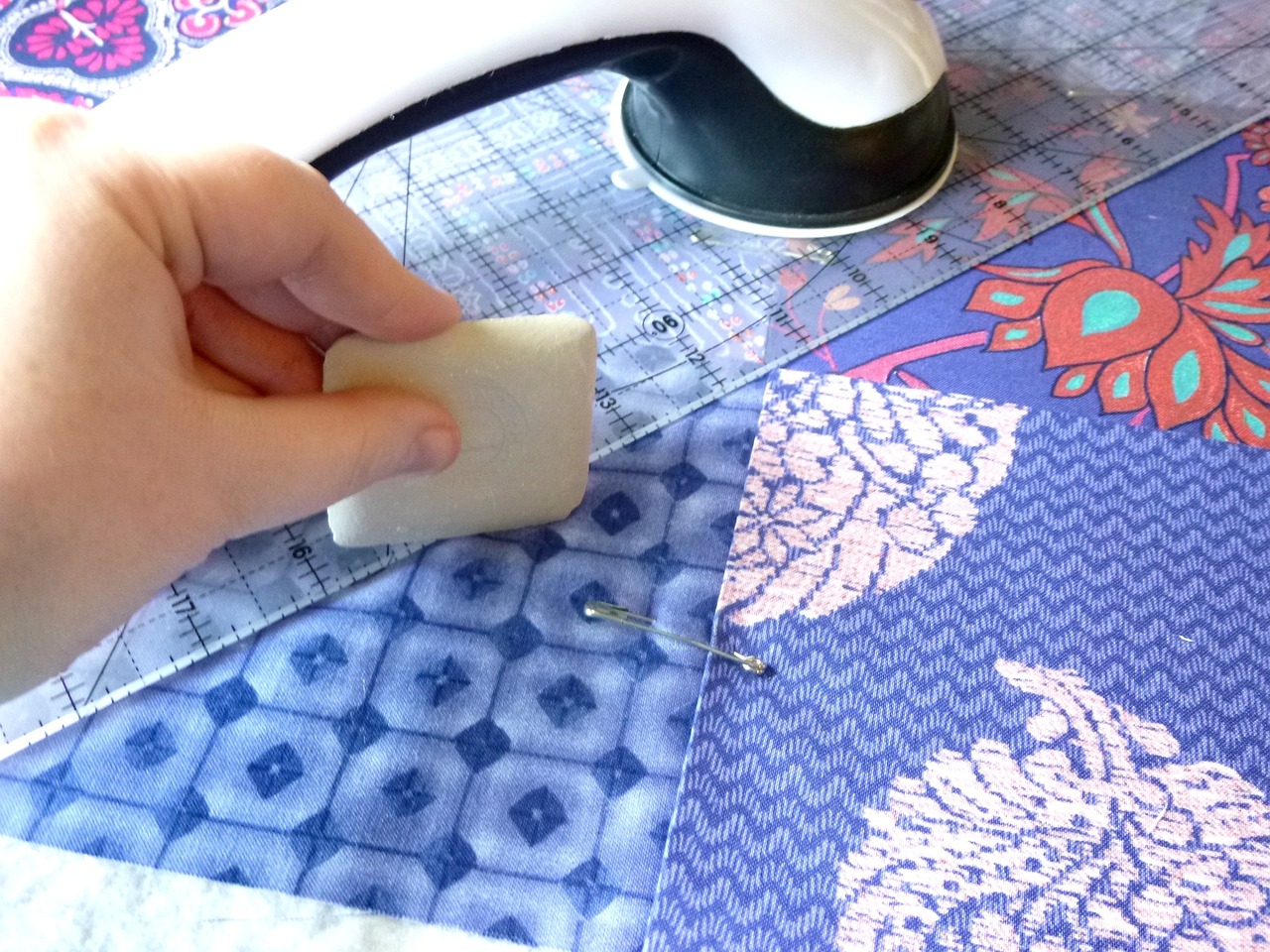Framing Quilts: Unique Ways to Display Your Works
Quilts are not just blankets; they are textile masterpieces that tell a story, showcase creativity, and reflect personal style. Framing a quilt transforms it from a functional item into a stunning piece of art that can elevate any space. But how do you go about framing a quilt in a way that does justice to its beauty? In this article, we will explore innovative techniques for framing quilts that not only enhance their aesthetic appeal but also preserve their quality for years to come. From choosing the right frame to seasonal displays, we've got you covered with tips and tricks that will make your quilts the centerpiece of your decor.
When it comes to framing quilts, selecting the right frame is crucial. Think of the frame as the jewelry that complements your quilt. You wouldn’t wear just any piece with a stunning outfit, right? The same principle applies here. Consider the following factors:
- Size: Make sure the frame is appropriately sized for your quilt. A frame that is too small can make the quilt feel cramped, while one that is too large can overwhelm it.
- Material: Frames come in various materials like wood, metal, or even acrylic. Choose a material that not only matches your decor but also enhances the quilt's design.
- Style: Whether you prefer a rustic look or a modern aesthetic, the frame's style should harmonize with the quilt's colors and patterns.
By paying attention to these details, you can ensure that your quilt stands out as a focal point in your home.
Matting can significantly elevate your quilt's presentation, adding depth and contrast that draws the eye. Think of matting as the frame within a frame; it creates a buffer that allows the quilt to breathe. When choosing matting, consider various materials and colors:
- Color: A contrasting color can make your quilt pop, while a complementary shade can create a more harmonious look.
- Texture: Different textures can add an interesting dimension to your display. Consider using linen or cotton mats for a soft touch.
Experimenting with different matting options can help highlight your quilt's unique features and colors beautifully.
If your quilt features dimensional elements like buttons, beads, or other embellishments, a shadow box frame is the way to go. These frames provide depth, allowing for a three-dimensional display that makes your quilt truly stand out as a work of art. Think of it as creating a miniature gallery for your quilt. Shadow box frames also allow you to include additional items, such as photographs or fabric swatches, that tell the story behind your quilt.
Proper hanging techniques are essential for displaying quilts effectively. You wouldn’t want your masterpiece to sag or slide down the wall, right? There are several methods to keep your quilt securely in place:
- Rod Systems: Using a rod system allows for easy adjustments and gives your quilt a polished look.
- Clips: Specialty clips can hold the quilt securely without causing damage, making them a popular choice for delicate fabrics.
By choosing the right hanging method, you can ensure your quilt is showcased beautifully while remaining easy to adjust or rotate.
Why keep your quilt hidden away when you can rotate your displays seasonally? This keeps your decor fresh and engaging, much like changing your wardrobe with the seasons. Consider showcasing quilts that reflect the changing seasons:
- Bright, floral quilts for spring.
- Warm, cozy patterns for fall.
This not only enhances your home’s ambiance but also allows you to enjoy your quilts in new and exciting ways throughout the year.
Lighting plays a significant role in how quilts are perceived. Natural light can enhance the colors and textures of your quilt, but too much sunlight can lead to fading. Position your quilts where they can bask in gentle light, or consider using artificial lighting to highlight their best features. Think of lighting as the spotlight on your quilt's stage, drawing attention to its intricate details.
To maintain the integrity of your quilts, using proper preservation techniques is essential. Just like you would take care of a fine wine, your quilts deserve the same level of care. Here are some tips:
- Use acid-free materials when framing to prevent fading and damage.
- Store quilts in a cool, dry place, away from direct sunlight.
By following these preservation techniques, you can ensure your quilts remain beautiful for generations to come.
For the crafty enthusiast, creating your own quilt frames can be a rewarding project. Not only does it add a personal touch, but it also allows you to customize the frame to fit your quilt perfectly. Consider this a way to express your creativity even further! There are plenty of step-by-step guides available online to help you get started on your DIY framing journey.
If you're considering exhibiting your quilts in galleries, understanding the best practices for presentation is vital. Professional framing options can attract attention and admiration, making your quilts the stars of the show. Think of it as preparing for a big performance; every detail matters. From the framing to the lighting, every element should work together to create a stunning display that captivates your audience.
Q: Can I frame a quilt without damaging it?
A: Yes! Use acid-free materials and proper hanging techniques to protect your quilt.
Q: How do I choose the right size frame?
A: Measure your quilt and select a frame that is slightly larger to provide a border.
Q: What is the best way to store quilts?
A: Store quilts in a cool, dry place, preferably rolled or folded in acid-free materials.

Choosing the Right Frame
When it comes to displaying your beautiful quilts, the frame you choose can make all the difference. Think of the frame as the icing on the cake; it should enhance the quilt's beauty without overshadowing it. So, how do you choose the right frame? First, consider the size of your quilt. A frame that’s too small can make your masterpiece look cramped, while one that’s too large may cause it to get lost in the space. Measure your quilt carefully and look for frames that offer a snug fit.
Next, let's talk about material. Frames come in a variety of materials, such as wood, metal, and even acrylic. Each material offers a unique aesthetic. For instance, a rustic wooden frame can add a warm, homey touch to your quilt, while a sleek metal frame might give it a more modern feel. Consider the style of your quilt and the overall decor of the room where it will hang. This will help you select a frame that complements both.
Don’t forget about style. The design of the frame should harmonize with the quilt. If your quilt features vibrant colors and intricate patterns, a simple frame might be best to avoid visual clutter. On the other hand, if your quilt has a more subdued palette, a decorative frame could add an interesting focal point. Look for frames that offer a variety of finishes—matte, glossy, or distressed—to match the quilt’s character.
Finally, consider the depth of the frame. Some quilts have embellishments or 3D elements that require a deeper frame. In such cases, a shadow box frame might be the perfect solution, allowing your quilt to breathe and be appreciated from all angles. To help you visualize your options, here’s a quick comparison table:
| Frame Material | Style | Best For |
|---|---|---|
| Wood | Rustic | Traditional quilts |
| Metal | Sleek | Modern designs |
| Acrylic | Contemporary | Minimalist decor |
| Shadow Box | Dimensional | Quilts with embellishments |
In summary, choosing the right frame is a blend of art and science. By considering size, material, style, and depth, you can find a frame that not only showcases your quilt but also enhances its beauty. So, take your time, explore your options, and let your quilt shine!

Matting Options
When it comes to framing quilts, matting is a game-changer. It serves not only as a decorative element but also as a protective barrier that keeps your quilt safe from direct contact with the glass. Imagine your quilt as a beautiful painting; the matting is like the frame that enhances its beauty and makes it pop! Choosing the right matting can bring out the intricate details and vibrant colors of your quilt, making it a focal point in any room.
There are a variety of matting materials available, each offering a unique aesthetic. For instance, cotton rag matting is a popular choice due to its durability and acid-free properties, which help prevent discoloration over time. Alternatively, you might consider using linen matting for a more textured feel, adding an organic touch that complements the fabric of your quilt. If you’re feeling adventurous, there are even metallic mats that can add a modern twist to your presentation!
Color is another crucial factor when it comes to matting. You want to select a hue that not only matches your quilt but also enhances its overall appearance. Here are a few tips for choosing the right color:
- Neutral Tones: Whites, creams, and grays can provide a subtle backdrop that allows your quilt to shine.
- Bold Colors: If your quilt features vibrant patterns, consider a bold mat to create a striking contrast.
- Complementary Colors: Use colors found within the quilt itself to create harmony and draw the eye.
In addition to color and material, the width of the matting can also impact the visual appeal. A wider mat can create a more dramatic effect, giving your quilt space to breathe, while a narrower mat might lend a more contemporary feel. It’s all about finding the right balance that reflects your personal style and the story behind your quilt.
Ultimately, the right matting can elevate your quilt from a simple textile to a stunning piece of art. So, whether you’re framing a family heirloom or a modern creation, don’t overlook the importance of matting. It’s the unsung hero of quilt display, providing both protection and a touch of elegance that can transform any space.

Shadow Box Frames
When it comes to displaying quilts, are a game changer. These specially designed frames create a three-dimensional effect that allows your quilts to shine in all their glory. Unlike traditional frames that lay flat against the wall, shadow box frames provide depth, making them perfect for quilts that feature dimensional elements such as embellishments, appliqués, or unique stitching techniques. Imagine your quilt not just hanging on the wall, but almost floating within its frame, inviting viewers to appreciate its texture and craftsmanship from all angles.
One of the most appealing aspects of using shadow box frames is their versatility. You can choose from a variety of styles, colors, and materials to find the perfect match for your quilt and your home decor. Whether you prefer a rustic wooden frame or a sleek modern design, there’s a shadow box frame out there that will complement your quilt beautifully. Additionally, the depth of these frames allows for creative layering. You might consider adding decorative elements like fabric swatches, photos, or even small trinkets that relate to the story behind your quilt. This not only enhances the visual interest but also creates a narrative around your piece, making it even more special.
Another important consideration when using shadow box frames is the mounting technique. It’s crucial to securely mount your quilt within the frame to prevent it from shifting or becoming damaged over time. Many quilters choose to use acid-free materials to ensure that their quilts are protected from fading and deterioration. You can also utilize spacers within the frame to create that coveted floating effect. This ensures that your quilt is showcased beautifully without any risk of it touching the glass, which can lead to moisture buildup and potential damage.
Here’s a quick overview of the advantages of using shadow box frames:
- Depth: Creates a three-dimensional display that enhances visual appeal.
- Versatility: Available in various styles and materials to fit any decor.
- Layering: Allows for the inclusion of additional decorative elements.
- Protection: Keeps quilts safe from damage and fading with proper mounting techniques.
In conclusion, shadow box frames not only elevate the aesthetic of your quilts but also serve a practical purpose in preserving their integrity. They are an excellent choice for anyone looking to showcase their textile masterpieces in a way that is both beautiful and functional. So, if you’re ready to take your quilt displays to the next level, consider investing in a shadow box frame that will make your creations truly stand out.
Q: Can I use a shadow box frame for any type of quilt?
A: Yes! Shadow box frames are suitable for various types of quilts, especially those with dimensional elements. Just ensure the frame size matches your quilt dimensions.
Q: How do I properly mount my quilt in a shadow box frame?
A: Use acid-free mounting materials and consider using spacers to keep the quilt from touching the glass. Secure the quilt in a way that allows it to maintain its shape and beauty.
Q: Where can I find shadow box frames?
A: Shadow box frames can be found at craft stores, home decor shops, or online retailers. Make sure to choose a frame that complements your quilt's style.

Hanging Techniques
When it comes to displaying your stunning quilts, play a pivotal role in ensuring that your textile masterpieces are showcased in the best possible way. Imagine walking into a room and being immediately captivated by a quilt gracefully hanging on the wall, its colors and patterns dancing in the light. To achieve this, you need to consider various methods that not only secure your quilt but also enhance its aesthetic appeal.
One popular method is using a rod system. This involves installing a decorative rod across the wall, from which the quilt can be hung. Rods come in various materials such as wood or metal, allowing you to choose one that complements your quilt's design. For a seamless look, consider using curtain clips or rings to attach the quilt to the rod. This technique allows for easy adjustment and gives the quilt an elegant drape, making it look as if it’s floating on the wall.
Another effective technique is using clip frames. These frames are particularly useful for quilts that are lightweight or have intricate designs that you want to keep visible. Clip frames hold the quilt taut, preventing it from sagging while still allowing for a bit of texture to show through. Additionally, they can be easily mounted on the wall, making it a practical choice for those who like to change their displays frequently.
For those who prefer a more traditional approach, nailing or tacking the quilt directly to the wall can be a viable option. While this method may seem a bit daunting, it allows the quilt to lay flat against the wall, showcasing every stitch and detail. Just be cautious with this technique, as it can potentially damage the fabric. If you choose this route, consider using acid-free tacks to minimize any potential harm to your quilt.
Don't forget about the power of magnets. Using a magnetic hanging system can be a game-changer, especially for those who want a modern twist on quilt displays. This method involves attaching magnets to the back of the quilt and using a metal strip on the wall. It’s a clean and minimalist approach that allows for quick changes and adjustments without any visible hardware.
Regardless of the technique you choose, remember that proper alignment is crucial. Take the time to measure and mark where you want your quilt to hang. A crooked quilt can detract from its beauty, so use a level to ensure it’s perfectly straight. Additionally, consider the height at which you hang your quilt. Ideally, it should be at eye level, allowing viewers to appreciate its details without straining.
Lastly, it’s important to think about the environment in which your quilt will be displayed. Ensure that the area is free from direct sunlight, as prolonged exposure can fade the colors over time. If you’re hanging your quilt in a high-traffic area, consider using a glass or acrylic cover to protect it from dust and damage.
In summary, the right hanging technique can dramatically enhance the way your quilt is perceived. Whether you opt for a rod system, clip frames, or even a magnetic approach, the key is to secure your quilt in a way that showcases its beauty while preserving its integrity. Happy hanging!
- What is the best way to hang a quilt without damaging it? Using a rod system with clips or a magnetic hanging system are both excellent choices that minimize damage.
- How can I prevent my quilt from fading when displayed? Avoid direct sunlight and consider using UV-protective glass if framing your quilt.
- Can I change the display of my quilt frequently? Yes! Using clip frames or a rod system allows for easy adjustments and changes.

Seasonal Displays
When it comes to showcasing your quilts, can add a dynamic touch to your home decor. Imagine walking into a room where the ambiance changes with the seasons, and your quilts play a starring role in that transformation. By rotating your quilts to reflect the changing seasons, you not only keep your space engaging but also highlight the unique colors and patterns of each quilt. For instance, a quilt adorned with autumn leaves can bring warmth and coziness during the fall months, while a vibrant floral quilt can breathe life into your space in spring.
To make the most of seasonal displays, consider the following ideas:
- Winter Warmth: Opt for quilts with deep hues and cozy textures, like flannel or wool. These quilts can be displayed on your bed or draped over a chair to create a warm, inviting atmosphere.
- Spring Awakening: Choose quilts featuring bright, cheerful colors and floral patterns. Hang these quilts in your living room or entryway to welcome the freshness of spring.
- Summer Vibes: Light and airy quilts with pastel shades or beach motifs can create a breezy feel. Consider displaying them in outdoor spaces or sunrooms.
- Autumn Elegance: Quilts in rich oranges, browns, and golds can perfectly encapsulate the essence of fall. Use them as wall hangings or table runners during harvest season.
To enhance your seasonal displays further, consider creating a thematic backdrop. For example, during the winter months, you might want to incorporate pinecones, evergreen sprigs, or even twinkling fairy lights to complement your quilt. Likewise, in spring, fresh flowers or pastel-colored decor can elevate the overall aesthetic. This not only draws attention to your quilts but also creates a cohesive look that ties the entire room together.
Another fun idea is to host a seasonal quilt swap with friends or fellow quilting enthusiasts. This allows you to share and showcase different quilts throughout the year while also gaining inspiration from others’ creations. Plus, it’s a wonderful way to build a community around your passion for quilting!
In conclusion, seasonal displays of quilts are not just about changing the fabric on your walls; they are about creating an atmosphere that resonates with the emotions and colors of each season. By thoughtfully selecting and displaying your quilts, you can transform your home into a vibrant tapestry of seasonal beauty that reflects your personal style and love for quilting.
Q: How often should I change my seasonal quilt displays?
A: It's generally a good idea to change your displays with each season, roughly every three months. This keeps your decor fresh and allows you to enjoy different quilts throughout the year.
Q: What is the best way to store quilts when not in use?
A: Store quilts in a cool, dry place, ideally in acid-free storage materials to prevent fading and damage. Avoid hanging them for long periods to prevent stretching.
Q: Can I mix different quilts in one display?
A: Absolutely! Mixing quilts can create a beautiful, eclectic look. Just be mindful of color coordination and patterns to ensure a harmonious display.

Lighting Considerations
When it comes to displaying your quilts, lighting is an unsung hero that can dramatically influence their appearance. Imagine walking into a room where the sunlight dances across your quilt, highlighting its intricate patterns and vibrant colors. On the other hand, poor lighting can make even the most beautiful quilt appear dull and lifeless. So, how do you ensure that your quilt gets the spotlight it deserves?
First off, consider the direction of natural light in your space. South-facing windows typically provide the most consistent light throughout the day, while north-facing windows may cast a softer, diffused glow. If you have the luxury of choosing where to hang your quilt, aim for a spot that receives ample natural light, but be cautious of direct sunlight, which can lead to fading over time. A good rule of thumb is to hang your quilt in a location where it can bask in the light without being exposed to the harsh rays that can damage its fabric.
Next, think about the use of artificial lighting. Track lighting is an excellent option for illuminating your quilt without overwhelming it. By adjusting the direction of the lights, you can create a spotlight effect that draws attention to the quilt's details. Additionally, consider using LED lights, which are not only energy-efficient but also emit minimal heat, reducing the risk of damaging your quilt.
For a more dramatic effect, you might want to explore the concept of layering your lighting. This involves combining different types of light sources to create depth and interest. For instance, you could use wall sconces to provide ambient light while incorporating a picture light above the quilt for focused illumination. This technique not only enhances the quilt's visual appeal but also adds a cozy ambiance to your space.
Finally, don't forget to experiment with color temperature. Warmer light can make your quilt feel more inviting and cozy, while cooler light can give it a modern, crisp look. You might find it helpful to use a color temperature meter to see how different lights affect the colors in your quilt. This way, you can choose the perfect lighting setup that complements your quilt's palette.
In summary, the right lighting can transform your quilt from a simple textile piece to a stunning visual masterpiece. By considering natural light, using appropriate artificial lighting, layering your light sources, and experimenting with color temperatures, you can create an enchanting display that showcases your quilt in the best possible way.
- What type of lighting is best for quilts? Natural light is ideal, but if that’s not an option, consider using soft LED lights to avoid heat damage.
- Can I use colored bulbs to enhance my quilt's colors? Yes, colored bulbs can create different moods, but be cautious as they might alter the appearance of the quilt's colors.
- How can I prevent my quilt from fading in sunlight? Use UV-filtering glass or hang your quilt in a spot that doesn’t receive direct sunlight for prolonged periods.
- Is it necessary to use a picture light for my quilt? While it's not necessary, a picture light can enhance the quilt's details and make it stand out as a focal point.

Preservation Techniques
When it comes to preserving your quilts, the goal is to ensure that these beautiful textile masterpieces remain in pristine condition for years to come. After all, a quilt is not just a blanket; it’s a piece of art, often imbued with memories and emotions. So, how do we protect these cherished creations? It all starts with the materials we use and the methods we choose.
One of the most critical aspects of quilt preservation is using acid-free materials. Acid can cause fabrics to deteriorate over time, leading to yellowing and weakening of the fibers. When selecting storage materials, look for acid-free tissue paper, boxes, and bags designed specifically for textile storage. These materials act as a buffer, protecting your quilt from environmental damage.
Another important factor to consider is the environment where you store your quilts. Ideally, you want to keep them in a cool, dry place, away from direct sunlight. Sunlight can cause fading and can significantly reduce the vibrancy of colors. A temperature-controlled environment is perfect, as it helps prevent mold and mildew, which thrive in humid conditions. Consider using a climate-controlled storage unit if your home is prone to humidity fluctuations.
When it comes to folding or rolling your quilts for storage, it’s essential to do it correctly. Avoid sharp creases that can lead to permanent damage. Instead, roll your quilt loosely around a non-acidic tube or fold it gently, using acid-free tissue paper between the layers to cushion it. This technique helps to minimize stress on the fabric and keeps it looking fresh.
For those looking to display their quilts while still preserving them, consider using UV-filtering glass in your frames. This type of glass significantly reduces the amount of harmful UV rays that can penetrate and cause fading. Additionally, ensure that the quilts are not tightly stretched in the frame, allowing for air circulation, which is vital for preventing mold growth.
Lastly, regular maintenance is key. Every few months, take your quilts out of storage to check for any signs of damage or deterioration. This proactive approach allows you to address any issues before they become significant problems. If you notice any discoloration or damage, consult a professional textile conservator for advice on restoration.
- How often should I clean my quilt? It depends on usage, but generally, cleaning every few years is sufficient. Always follow the care instructions specific to your quilt.
- Can I use regular glass for framing? It's better to use UV-filtering glass to protect your quilt from fading. Regular glass does not provide the same level of protection.
- What's the best way to store a quilt long-term? Use acid-free materials, store in a cool, dry place, and avoid direct sunlight to keep your quilt in good condition.

DIY Framing Projects
For those who thrive on creativity and love to personalize their space, can be an exciting way to showcase your quilts. Not only does it allow you to display your textile masterpieces uniquely, but it also gives you the freedom to incorporate your personal style into the framing process. Imagine transforming a plain wall into a gallery of your own creations, where each quilt tells a story and reflects your artistic journey.
Before diving into your DIY framing adventure, it's essential to gather the right materials. You’ll need a few basics to get started:
- Wood or Metal Frames: Choose frames that complement your quilt's colors and patterns.
- Mat Board: This adds depth and enhances the visual appeal of your quilt.
- Glass or Acrylic: Protects your quilt from dust and damage while allowing the colors to shine.
- Hanging Hardware: Ensure your quilts are securely displayed.
Once you have your materials, the first step is to measure your quilt accurately. This is crucial; a well-measured quilt looks polished and professional. Next, cut your mat board to fit the frame, allowing a bit of space around the quilt to create a stunning visual effect. You can even get creative with the matting by using multiple layers or different colors that complement your quilt's design.
After preparing your mat board, carefully position your quilt on it. Use acid-free tape to secure the quilt in place. This is important because it prevents any damage or discoloration over time. Once everything is secured, place the glass or acrylic over the quilt, ensuring it fits snugly within the frame. Finally, assemble the frame, making sure everything is tight and secure.
For those who want to take it a step further, consider adding embellishments to your frame. You could paint it in a color that matches your quilt or even decoupage it with fabric scraps or photos that resonate with your quilt's theme. This not only adds a unique touch but also creates a cohesive look that ties your entire display together.
If you're feeling particularly adventurous, you might want to explore alternative framing methods, such as using a shadow box frame. This allows for more depth and can accommodate three-dimensional elements, such as fabric flowers or other embellishments that make your quilt truly pop. Shadow boxes can be a fantastic way to create a layered look that draws the eye and invites viewers to appreciate the details of your work.
Finally, don't forget to consider how you will hang your newly framed quilt. Using a sturdy wall hook or a decorative rod can add an extra flair to your display. Make sure to choose a location that receives the right amount of light, as this will enhance the colors and textures of your quilt, making it a focal point in your home.
In conclusion, DIY framing projects not only allow you to personalize your quilt displays but also provide a sense of accomplishment. Each framed piece becomes a testament to your creativity and dedication. So grab your materials, unleash your imagination, and start framing your quilts in a way that truly reflects your artistic vision!
Q: What materials do I need for a DIY quilt framing project?
A: You'll need wood or metal frames, mat board, glass or acrylic, acid-free tape, and hanging hardware.
Q: How do I ensure my quilt is protected when framing?
A: Use acid-free tape to secure the quilt and opt for glass or acrylic to protect it from dust and damage.
Q: Can I customize my frame?
A: Absolutely! You can paint your frame or add embellishments to match your quilt's theme.

Showcasing Quilts in Galleries
When it comes to , the presentation can make all the difference between a simple display and a captivating exhibition. Think of your quilt as a masterpiece in a museum; it deserves to be treated with the utmost care and creativity. The first step is to consider professional framing. A well-chosen frame not only protects your quilt but also enhances its visual appeal. Opt for frames that complement the quilt's colors and patterns, allowing the textile art to shine without overwhelming it.
Next, let's talk about display techniques. The way you hang your quilt can dramatically influence its impact. Consider using gallery-style hanging systems that allow for easy adjustments. This flexibility is crucial, especially if you plan to rotate your quilts frequently. You can also use spacers to create a gap between the quilt and the wall, giving it a floating effect that adds depth and draws the eye. Remember, the goal is to make your quilt look like it belongs in a gallery, so take your time to get the positioning just right.
Lighting is another critical aspect of quilt display. Natural light can bring out the rich colors and textures of your fabric, but be cautious about direct sunlight, which can cause fading. If you're working with artificial lighting, consider using spotlights or track lighting to highlight specific quilts. The right lighting can transform a simple quilt into a stunning focal point, making it impossible for gallery visitors to look away.
Additionally, don't forget about the importance of information labels. Just like in a museum, providing context can enhance the viewer's experience. Include details such as the quilt's title, the artist's name, the year it was made, and a brief description of its inspiration or technique. This not only educates visitors but also creates a deeper connection between the viewer and the artwork.
Finally, consider the overall layout of the exhibition. A well-planned arrangement can guide visitors through the space, creating a narrative that tells the story of your quilts. You might want to group quilts by theme, color, or technique, allowing viewers to explore different aspects of your work. Remember, the goal is to create an immersive experience that captivates and inspires. So, whether you're showcasing a single quilt or an entire collection, take the time to think about how each piece interacts with the others.
In conclusion, showcasing quilts in galleries is about more than just hanging fabric on a wall; it's an art form in itself. By paying attention to framing, hanging techniques, lighting, informative labels, and layout, you can create a stunning exhibition that not only highlights your work but also engages and delights your audience.
- What is the best way to frame a quilt for gallery display?
Using a professional frame that complements the quilt's colors and patterns is essential. Consider using acid-free materials to prevent damage.
- How can I protect my quilt from fading in a gallery setting?
Avoid direct sunlight and use UV-filtering glass in your frame. Proper lighting can also help minimize fading.
- What information should I include on the labels for my quilts?
Include the quilt's title, artist's name, year created, and a brief description of its inspiration or technique.
- How do I choose the right lighting for my quilt display?
Use spotlights or track lighting to highlight your quilts, ensuring that the light enhances their colors without causing damage.
Frequently Asked Questions
- What is the best frame size for my quilt?
The best frame size for your quilt depends on its dimensions and the look you want to achieve. Ideally, choose a frame that allows for a bit of breathing room around the edges of the quilt, enhancing its overall appeal. A frame that is too tight can make the quilt look cramped, while one that is too large may distract from its beauty.
- How do I choose the right matting for my quilt?
Choosing the right matting is all about contrast and harmony. Look for matting colors that complement the quilt's colors without overpowering them. A neutral mat can provide a classy backdrop, while a bold color can create a striking visual impact. Don't hesitate to experiment with different textures and materials to find what suits your quilt best!
- What are shadow box frames, and why should I use them?
Shadow box frames are deeper than regular frames, allowing for the display of quilts with dimensional elements, such as embellishments or layered fabrics. They create a more dynamic presentation that can add depth and interest to your quilt. If your quilt has unique textures or features that you want to highlight, a shadow box frame is a fantastic choice!
- How can I hang my quilt securely?
To hang your quilt securely, consider using a rod system or clips that allow for easy adjustments. Make sure to use materials that won't damage your quilt, such as fabric-safe clips or rods. Proper hanging techniques will keep your quilt in place while allowing you to showcase it beautifully.
- Can I display quilts seasonally?
Absolutely! Rotating your quilt displays seasonally is a fun way to keep your decor fresh and engaging. You can choose quilts with seasonal colors or themes that reflect the time of year, adding a personal touch to your home’s ambiance throughout the seasons.
- What lighting is best for displaying quilts?
Lighting is crucial for showcasing your quilts effectively. Natural light is ideal, but be mindful of direct sunlight, which can fade fabrics over time. If you're using artificial lighting, opt for soft, diffused lights to highlight the colors and textures of your quilt without creating harsh shadows.
- How do I preserve my quilts?
To preserve your quilts, use acid-free materials for framing and storage. Proper care includes keeping them away from direct sunlight and humidity. When storing, consider rolling them instead of folding to prevent creases. These techniques will help maintain your quilt's integrity for years to come!
- Can I create my own quilt frames?
Yes, DIY framing can be a rewarding project! There are many tutorials available that guide you through the process step-by-step. Creating your own frames allows you to customize them to perfectly match your quilt and home decor, adding a personal touch to your display.
- What should I know about exhibiting quilts in galleries?
When exhibiting quilts in galleries, presentation is key. Invest in professional framing options that enhance your quilt's beauty and catch the eye of viewers. Additionally, familiarize yourself with display techniques that attract attention, ensuring your quilt is showcased in the best possible light.



















